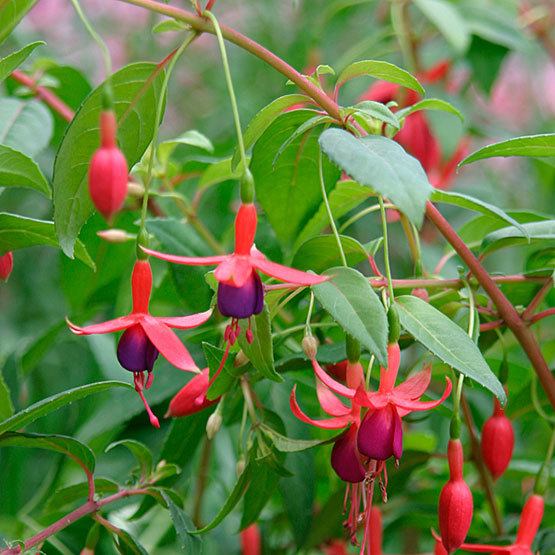
This distinctive genus bears pendulous, tubular flowers, which often have sepals and reflexed tubes of one color, and petals of another. Flowers may be single, semi-double, double, elongated, or erect.
Noteworthy CharacteristicsFuchsia performs well in a lightly-shaded border, in hanging baskets, as topiary, or as a hedge in frost free regions. These plants may be used as annuals or left to grow into natural shrub or tree forms.
CareGrow in fertile, moist but well-drained soil in full morning sun to partial afternoon shade.
PropagationSow seed in spring. Take softwood cuttings in spring, and semi-ripe cuttings in late summer with bottom heat.
ProblemsSpider mites, scale, thrips, whiteflies, fuchsia gall mite, aphids, root-knot nematodes, rust, gray mold, crown gall, crown and root rots, Southern blight, Verticillium wilt.
























